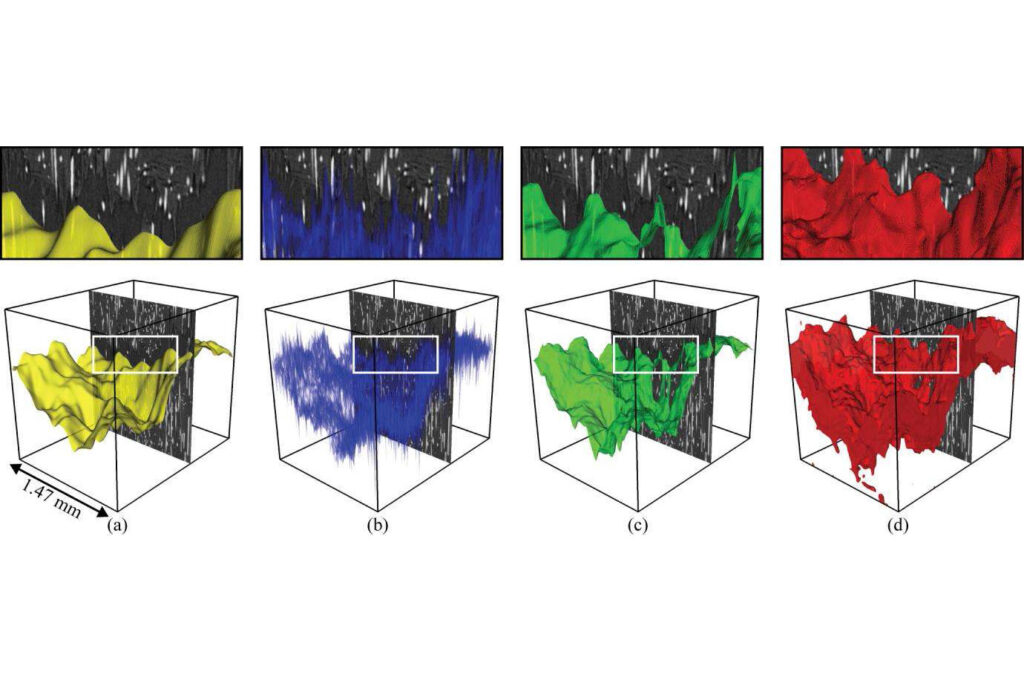Abstract
To develop and optimize of advanced composite materials such as glass fiber reinforced polymers (GFRPs) for a specific application area is an important topic. To inspect mechanical properties of GFRPs, material engineers use interrupted in situ tensile tests. During these tests, a test specimen is scanned multiple times in an industrial computed tomography (CT) scanner under various loads, starting from no load until the final fracture of the specimen. In this work we focus on the final step of the interrupted in situ tensile test, which is scanned when the specimen is completely losing its structural integrity in the final fracture zone. The defects occurring in the subsequent loading stages merge and ultimately form the final fracture. For this reason, conventional techniques tend to generate error prone final fracture regions or surfaces and thus require more advanced algorithms for extraction. The main contribution of this paper is found in the comparison of different techniques for extracting the final fracture. In the comparison we outline advantages and drawbacks of the presented techniques relative to each other.
Download
BibTeX
@InProceedings{amirkhanov2017comparison,
author = {Amirkhanov, Aleksandr and Salaberger, Dietmar and Kastner, Johann and Heinzl, Christoph and Gr\"{o}ller, Eduard},
booktitle = {7th Conference on Industrial Computed Tomography},
title = {Comparison of Final Fracture Extraction Techniques for Interrupted In situ Tensile Tests of Glass Fiber Reinforced Polymers},
year = {2017},
url = {https://www.ict2017.org},
}